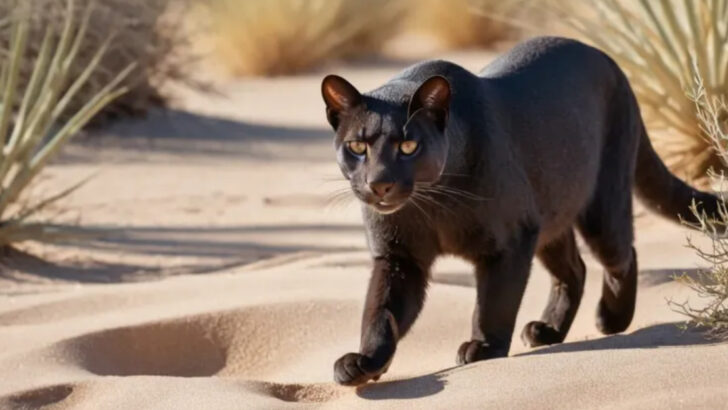Arizona’s deserts don’t just bake under the sun—they stalk.
Beneath the saguaro shadows and among the rocky canyons, wild cats prowl with silent grace and deadly focus. These are not house cats gone rogue. These are muscular hunters with eyes that pierce the heat haze and paws that make no sound.
From the elusive bobcat to the rare and ghostlike jaguar, the desert is alive with feline mystery. You may never spot one in person, but make no mistake—they see you.
Some slink by at dusk. Others wait until the stars burn overhead. And a few? They’re bold enough to wander right into your backyard.
Let’s meet 14 wild cats that call the Arizona desert home—and rule it.
Bobcat
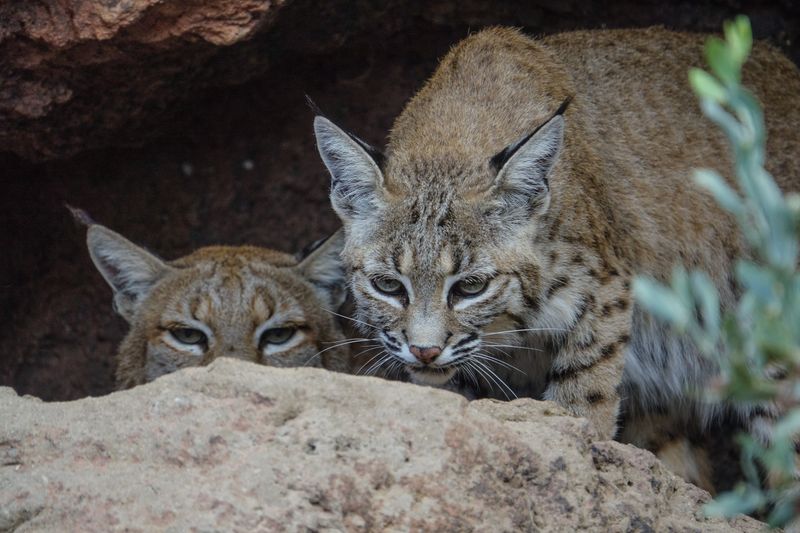
With a coat that mimics the desert landscape, the bobcat is a master of camouflage. Its tufted ears and short tail are distinctive features.
These solitary hunters glide through the brush with ease, often seen at dusk. Bobcats are skilled climbers, making them elusive to spot.
Their diet consists of small mammals, and they’re known to be quite resourceful. Did you know? The bobcat’s population is thriving, despite being a popular game animal. Their adaptability is key to their success.
Mountain Lion

The mountain lion, also known as the cougar, is the largest of Arizona’s wild cats. These solitary creatures are both majestic and mysterious.
They roam vast territories, often covering miles in search of prey. Their tawny coats blend seamlessly into the rocky terrain.
Mountain lions are apex predators, preying on deer and other mammals. They play a crucial role in maintaining the balance of the ecosystem. Seeing one in the wild is a rare and thrilling experience, a true testament to the rugged beauty of Arizona.
Ocelot
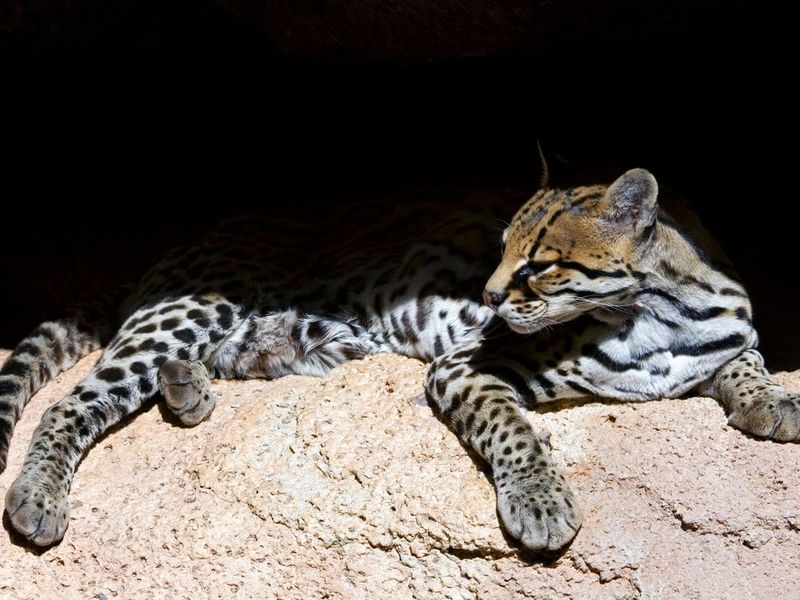
The ocelot, with its striking spotted coat, brings a touch of the exotic to Arizona’s deserts. These nocturnal hunters are seldom seen.
They have keen eyesight and hearing, making them adept hunters of small mammals and birds. Ocelots are shy and reclusive.
Their presence in Arizona is rare, but conservation efforts are helping to protect their habitat. Did you know? Ocelots were once hunted for their beautiful fur, but they are now a protected species.
Jaguar

Jaguars in Arizona are a rare spectacle, as these magnificent cats were once driven to near extinction in the U.S.
Their powerful build and distinctive rosette-patterned coat make them a marvel to behold. Jaguars are solitary and prefer dense cover.
They are apex predators, with a diet that includes deer and peccaries. Conservation efforts focus on preserving their habitat. Did you know? The jaguar is the only big cat in North America that roars.
Jaguarundi

The jaguarundi is a small wild cat with an elongated body, reminiscent of an otter. They are agile and swift, with a unique appearance.
These cats are diurnal, hunting during the day for birds, small mammals, and reptiles. They’re known for their varied vocalizations.
Though not commonly seen, jaguarundis are fascinating creatures of Arizona’s deserts. Did you know? Their name means “weasel cat” in the Guarani language, a nod to their unusual body shape.
Lynx
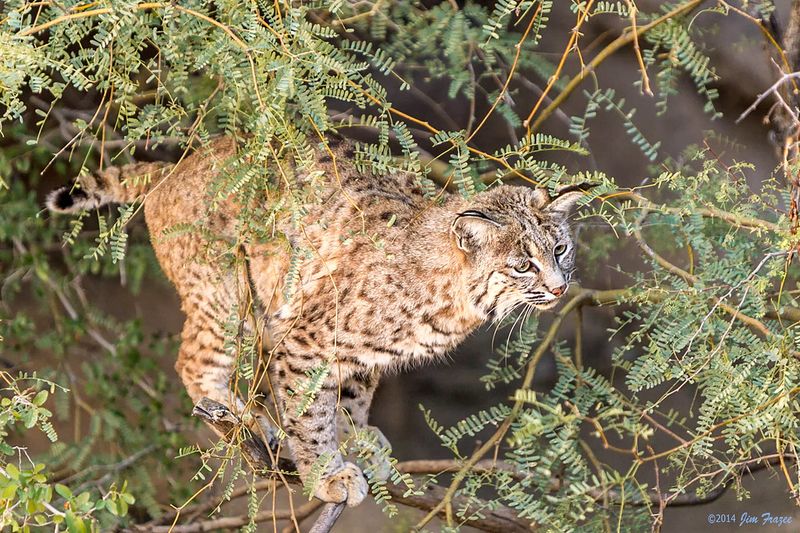
Lynxes are known for their beautiful tufted ears and thick, luxurious fur. In Arizona, they are adapted to the sparse desert landscape.
These medium-sized cats are solitary and elusive, often hunting small mammals and birds. Their keen eyesight is their greatest asset.
Lynx populations are stable, but they are rarely seen due to their shy nature. Fun fact: A lynx’s large paws act like snowshoes, perfect for traversing their varied habitats.
Canadian Lynx
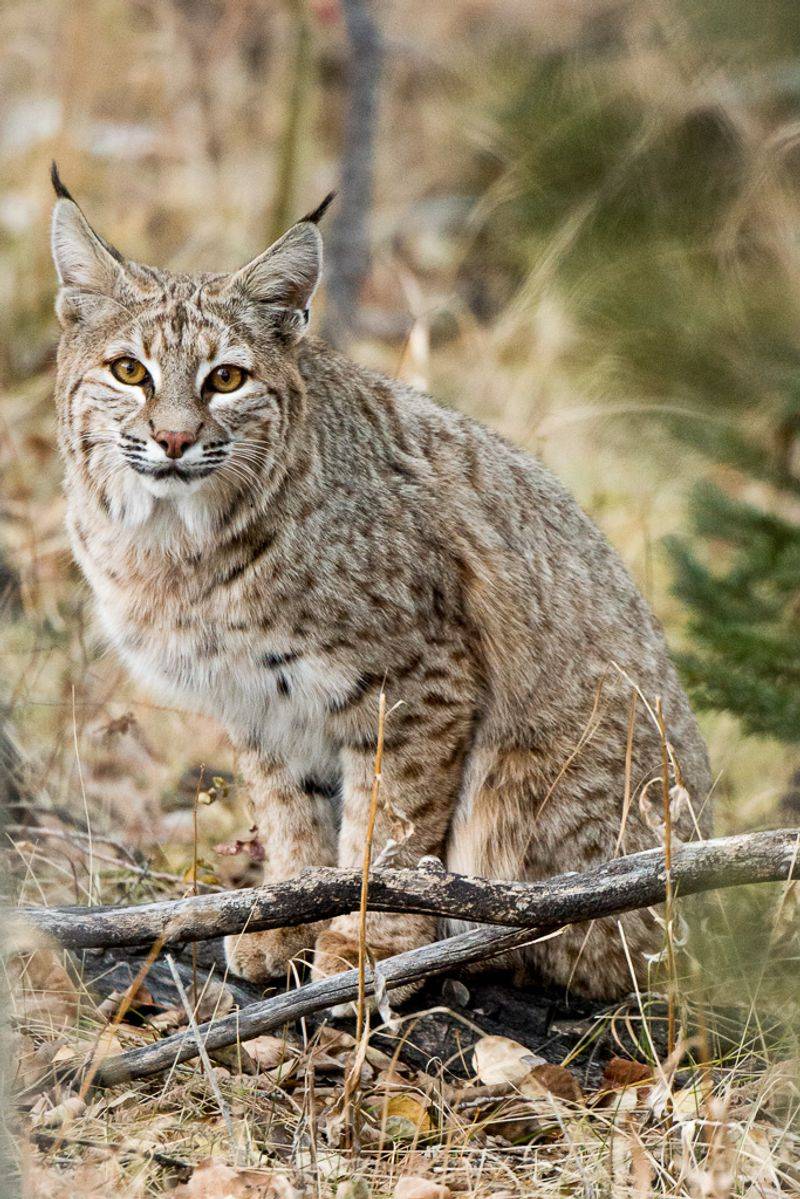
Though primarily found in the northern regions, the Canadian Lynx occasionally ventures into Arizona’s deserts.
Their thick fur and large paws distinguish them from other wild cats. They are primarily nocturnal hunters.
These lynxes feast on snowshoe hares, adapting to the scarcity of prey in the desert. Did you know? The Canadian Lynx’s population is closely tied to the hare’s population cycles.
Puma
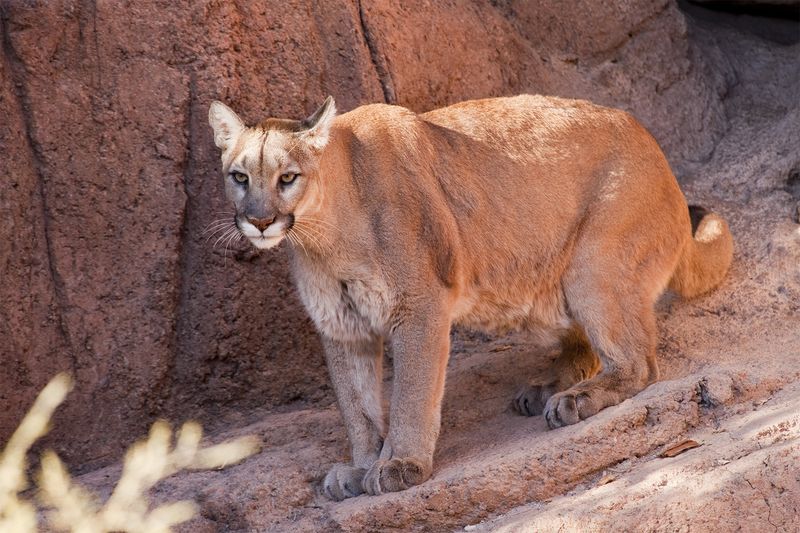
Pumas, also known as cougars or mountain lions, are adaptable predators found throughout Arizona.
Their tawny coats and muscular bodies make them formidable hunters. Pumas are solitary and require large territories.
These cats play a vital role in controlling prey populations, maintaining the balance in desert ecosystems. Fun fact: Pumas can leap distances of up to 15 feet in a single bound!
Caracal
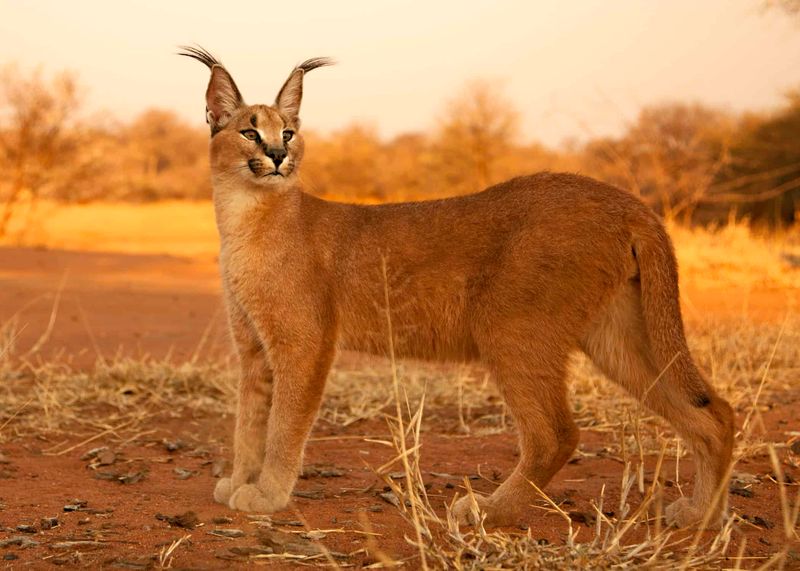
Though not a native species, caracals have occasionally been spotted in Arizona, likely escapees or introduced animals.
Their striking ear tufts and reddish coat make them stand out. Caracals are skilled hunters, known for their high jumps to catch birds.
In the desert, they adapt by hunting small mammals and reptiles. Did you know? Caracals are sometimes called “desert lynxes,” though they’re not true lynxes.
Serval
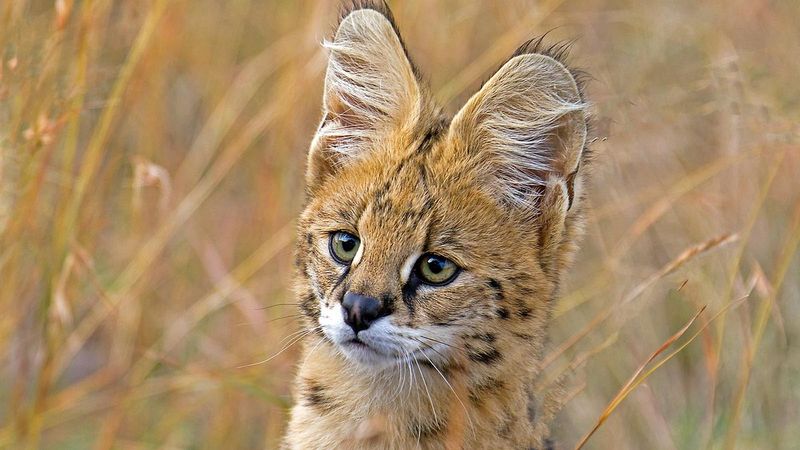
The serval, with its long legs and large ears, is an unusual sight in Arizona’s deserts. These cats are excellent hunters.
Their primary prey consists of rodents and birds, which they catch with precise, high leaps. Servals are solitary and nocturnal.
Though rare in Arizona, servals fascinate with their unique appearance. Did you know? Servals can rotate their ears independently to locate prey by sound.
Geoffroy’s Cat
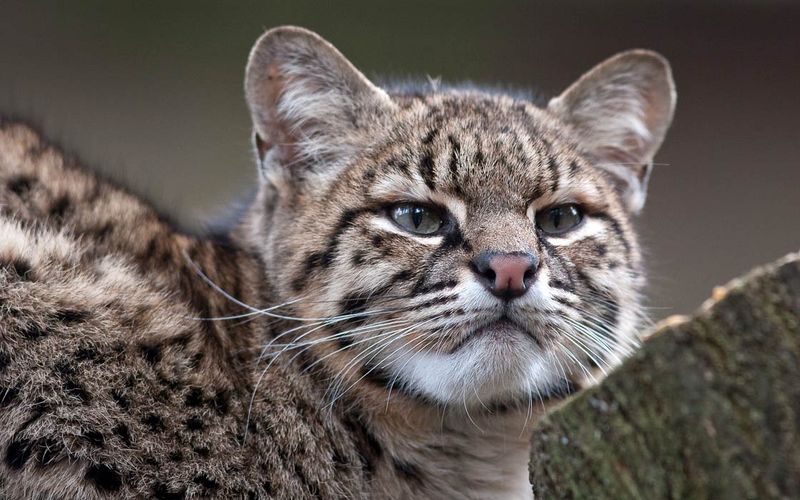
Geoffroy’s cats are small but fierce, with a beautiful mottled coat that blends into the desert landscape.
These cats are nocturnal and solitary, hunting small mammals and birds. Their agility and climbing ability aid in their survival.
In Arizona, their presence is rare, often associated with accidental introductions. Did you know? Geoffroy’s cats are native to South America, making their presence in North America quite intriguing.
Sand Cat
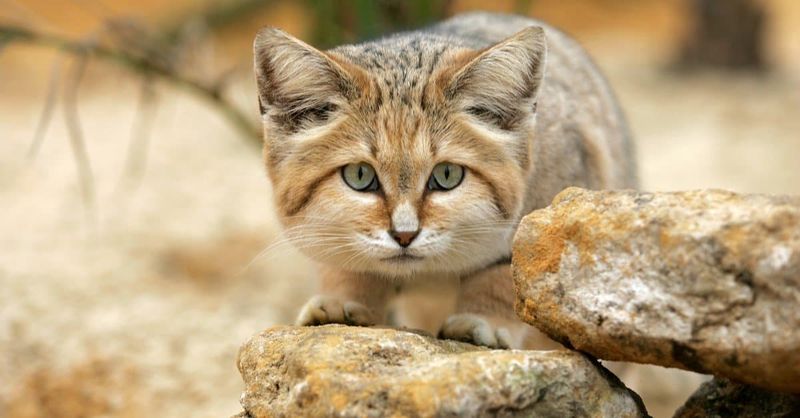
The sand cat is a master of survival in extreme desert conditions. Its pale coat and large ears are perfect for the hot, sandy environment.
These small cats are nocturnal, avoiding the intense heat of the day. They primarily hunt rodents and insects.
In Arizona, sand cats are rare, but their desert adaptations make them fascinating. Did you know? Sand cats can survive without drinking water for weeks, drawing moisture from their prey.
Marbled Cat
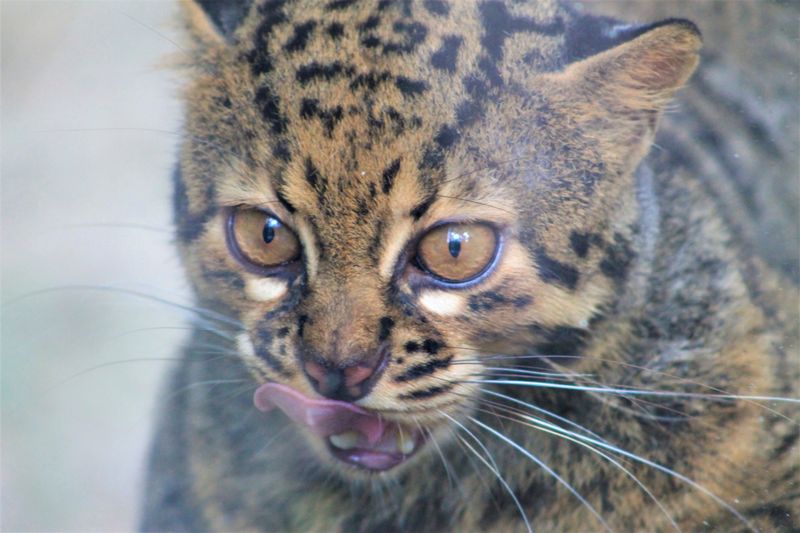
The marbled cat is an elusive and rare sight in Arizona. Its coat, resembling a marbled pattern, provides excellent camouflage.
These arboreal cats are agile climbers, often hunting birds and small mammals from the trees. Their solitary nature makes them hard to spot.
In Arizona, their presence is linked to occasional escapes from captivity. Did you know? The marbled cat’s large eyes give it excellent night vision, essential for nocturnal hunting.
African Wildcat
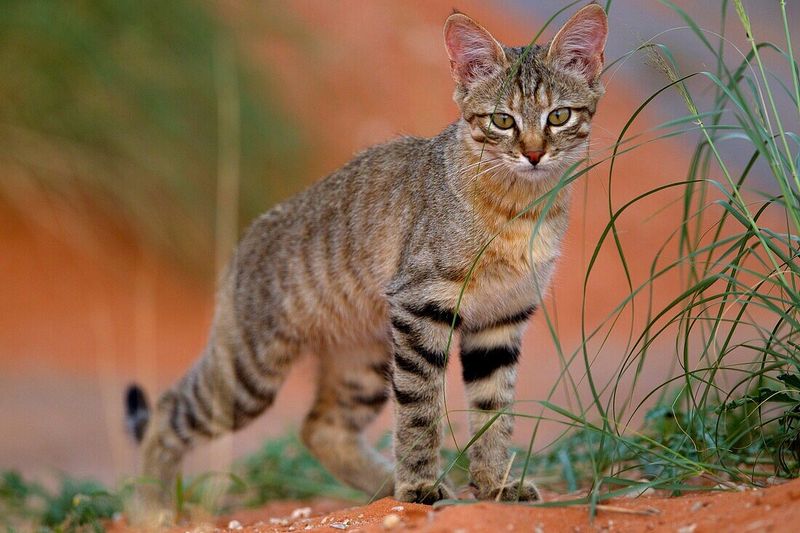
The African Wildcat, with its striped coat and slender build, is a rare visitor to Arizona’s deserts, usually due to introduction.
These cats are solitary hunters, relying on stealth to catch small mammals and birds. Their keen senses make them effective predators.
Though not native, African Wildcats are intriguing additions to Arizona’s wildlife. Did you know? They are considered the ancestors of domestic cats, sharing many behavioral traits.

